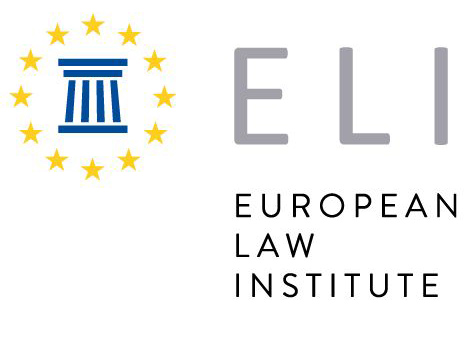Both documents provide helpful guidance on the design, use and deployment of automated systems, emphasising the need for responsible systems and robust safeguards, for notice to be given on the use of such systems and for decisions to be traceable and reasoned. They also call, among other things, for human oversight and review of significant decisions or in certain circumstances.
The webinar was opened by Lord John Thomas (ELI First Vice-President).
Teresa Rodríguez de las Heras Ballell (Member of the ELI Executive Committee; Author of the ELI Innovation Paper; Associate Professor, University Carlos III of Madrid) went on to present the ELI Guiding Principles for Automated Decision-Making in the EU. She explained that Automated Decision-Making (ADM) is understood broadly and defined as processes that are fed by input from different sources (eg human-based inputs, machine-generated data etc), which is then processed by the system in conformity with a predetermined objective. While ADM generates a variety of output (eg recommendation, ranking, rating etc), ELI Guiding Principles consider two broader scenarios, ie such output can be (1) an input for a subsequent decision making process, (2) or a final decision. The aim of the ELI Guiding Principles is to provide guidance to legislators to ensure a coherent regulation in the field, from the private law perspective. Teresa Rodríguez de las Heras Ballell continued by giving an overview of some of the specific principles, emphasising the importance of the Principle of non-discrimination against ADM.
Marc Rotenberg (President, Center for AI and Digital Policy (CAIDP); Adjunct Professor, Georgetown Law) thanked ELI for the opportunity to discuss this topic. He stressed that the ELI Guiding Principles will be useful for courts around the world. With regard to the Blueprint, he provided an overview of the process that led to the adoption of the document. There was an urgent call for the US to move forward to protect fundamental rights, as previously the US was reluctant to regulate the tech sector. The document is based on 5 principles, (1) safe and effective systems, (2) algorithmic discrimination protections, (3) data privacy, (4) notice and explanation, (5) human alternatives, consideration, and fallback. Marc Rotenberg said that the criticism that the document has no legal force is based on a misunderstanding, ie in the EU the document would have the status of a White Paper. He believed that the Blueprint could provide a foundation for a good law. He further stressed that a cooperation between the EU and US is necessary to ensure that ADM is human centered and reliable.
Juha Heikkilä (Adviser for Artificial Intelligence (CNECT.ADV02), Directorate-General for Communications Networks, Content and Technology, European Commission) explained the EU’s rationale in dealing with AI technology. He said that from the beginning, the EU felt it necessary to deal with technological and non-technological aspects of the technology. In 2018 the Commission outlined its approach, which dealt with not only research and industrial aspects, but also human and ethical aspects. The Commission is also advised by the High Level Expert Group on AI. He further stressed one aspect of the Commission’s approach, which focuses on the risks to safety and fundamental rights. The list of high risks systems is contained in an annex to the proposed AI Act, therefore can be revised and is flexible. The provisions of AI Act would apply to everyone who wants to put the AI product on the EU market. Juha Heikkilä emphasised that the EU wants to be a part of the coalition that strives for AI to be used responsibly. He opined that the US Blueprint is very interesting and valuable in this regard, as are ELI’s Guiding Principles.
During the Q&A session, participants discussed the commonalities and differences between the initiatives and agreed that all share a common heritage. Teresa Rodríguez de las Heras Ballell observed that the ELI Guiding Principles are minimalist and functionalist in the approach (technology neutrality, functional equivalence). Marc Rotenberg noted that both the Blueprint and EU AI Act recognise that decisions are about people, but also about safety and security (managing health systems, IT, electric grids – there personal data not a key component).
The discussion then continued on the interoperability of AI systems internationally. While from the technical point of view this is important, it was concluded that with regard to legal systems its more problematic, as not all ensure a high standard of human rights protection.
Teresa Rodríguez de las Heras Ballell’s presentation is available here and the webinar recording is available below.

